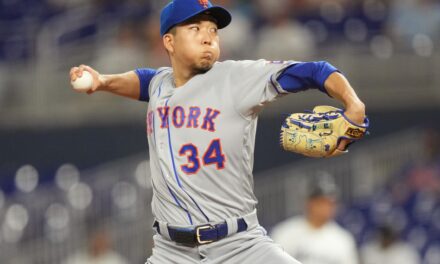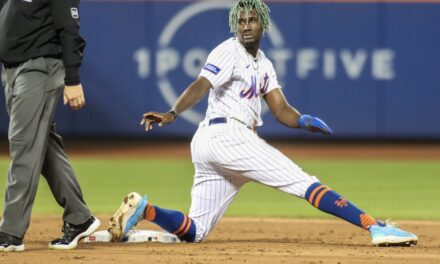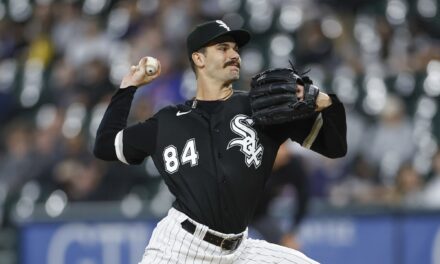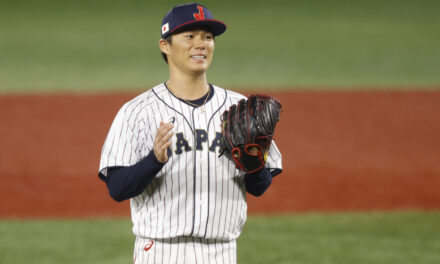
A Fan Shot by Daniel Marti
One of the few bright spots of an otherwise lackluster 2017-18 offseason for the Mets thus far has been the hiring of their new manager, Mickey Callaway.
Callaway hasn’t been shy about discussing his unorthodox ideas about pitching and how to get the most out of a staff. The current constitution of the roster presents a unique challenge for Callaway as the Mets have a plethora of starting pitchers.
The group includes Jacob deGrom, Noah Syndergaard, Steven Matz, Matt Harvey, Zack Wheeler, Seth Lugo, Robert Gsellman, and even Rafael Montero to a lesser degree.
Despite having arguably eight starters, pitching remains the Mets most significant weakness because only two (deGrom and Syndergaard) of the eight can be relied upon to pitch effectively. Since acquiring another starting pitcher via free agency doesn’t yet seem to be a priority for the front office, I propose that the Mets give Zeth Wheelugo a shot to be the No. 5 starter in the rotation.
Zeth Wheelugo would be the two-headed monster of Zack Wheeler and Seth Lugo, who would combine to pitch a complete game every fifth day (if all goes well). This is a radical deviation from the traditional concept of a starting pitcher striving to pitch six or more innings and allowing the bullpen to finish the game. This change in pitching philosophy begs two critical questions which I will outline and address below:
Why combine two starters to pitch a single game?
Although I love the idea of returning to the good old days of baseball when men like Tom Seaver would pitch 250+ innings and log 15+ complete games in a season, it simply isn’t realistic in modern times. Baseball is a sport of ebbs and flows that occur over the course of years and decades.
For a myriad of reasons that I won’t explore in this article, most pitchers today struggle to pitch five or six innings, let alone to go deeper in games. Baseball may naturally return to the glory days of starting pitchers finishing the games they start with regularity in time, but until then, teams must be proactive and implement systems and strategies which place their pitchers in the best positions possible to succeed.
Recently, more baseball teams have assigned a greater emphasis on constructing powerful bullpens and on utilizing relief pitchers in unique ways to record outs. The Indians and Astros come to mind as good examples of getting quality mileage out of their pitching staffs.
Andrew Miller has acted as the “relief-ace” of the Indians bullpen, entering games at the most critical junctures instead of being relegated to the ninth inning as a typical closer. Lance McCullers and Charlie Morton famously combined to shut out the offensive juggernaut known as the New York Yankees in Game 7 of the 2017 ALCS, thus securing a World Series berth and eventual victory for the Houston Astros.
The Mets can follow this trend by merging two of their starting pitchers who struggle to last more than a few innings to pitch a complete game between them.
The benefits for this approach are numerous for the Mets and I have highlighted the most significant ones here:
- The workload of the two pitchers involved will be reduced, thus giving them a better chance of staying healthy throughout the year.
- The starting pitcher tandem will only face the lineup of opposing teams twice. This will decrease the opposition’s exposure to the Mets’ starters which will facilitate the effectiveness of their outings.
- Two starting pitchers will give the bullpen an automatic day off every fifth day (most of the time at least), which should also help them to better maintain their health.
- Similarly, Mets’ relievers should be able pitch more effectively since they’ll be better rested.
- If the tandem proves to be effective, the Mets have just created a highly productive rotation piece in-house. This will take a lot of pressure off the volatile Steven Matz and Matt Harvey who, as of now, both figure to be vital pieces to Mets’ success in 2018.
Why use Zack Wheeler and Seth Lugo to carry this strategy out in 2018?
Zack Wheeler and Seth Lugo are the best candidates to pair up from the various options the Mets have. In particular, I think Wheeler should pitch the first 4-5 innings with Seth Lugo closing out the rest of the game.
Let’s begin rationalizing this by talking about Seth Lugo. Here are his statistics from the 2017 season:

At a glance, Lugo’s 2017 didn’t look so great but there are very promising aspects of his game that should translate well in a pitching tandem. For his career, Seth Lugo has consistently kept his walk rate quite low which is essential for relievers to be effective.
In this case, Lugo would serve as the “closer” by pitching the final four or five innings in the games that Wheeler would theoretically start. Lugo’s low walk rate would serve as the perfect complement to Wheeler’s high walk rate, which means he won’t be prone to adding extra base runners when he would come in potentially already having men in scoring position.
Let’s look at Lugo’s numbers when he faces a batting order the second time around. He performs fantastically after he has seen batters once, increasing his strikeouts (9.69 K/9) and further cutting down on base runners (1.10 WHIP).
Based on this, I would theorize that Lugo thrives when he can adjust to batters after seeing what they do live in games. Although it may not be the same, I believe that analyzing the batters’ approaches live and communicating with Wheeler in between innings will give Lugo a good idea of what to do on the mound.
By acting as the closer of the tandem, Lugo will be in the best position to replicate his success against batters when facing them a second time because he will have more detailed scouting information that would not be available to him in the beginning of games.
Another key factor that implores me to include Seth Lugo in this pairing overall is his UCL tear. Lugo should have his innings as limited as possible to mitigate further damage to his elbow since he has opted to pitch through his tear instead of having it surgically repaired.
Now, let’s do the same exercise with Zack Wheeler. His 2017 statistics are shown below:

Aside from his strikeout rate, nothing seems to be that appealing about Zack Wheeler’s 2017. However, the case for Wheeler is based more on his talent level rather than on his 2017 performance.
Wheeler’s stuff has always been elite-level which was one of the reasons why he was among the top prospects in baseball in 2013. In 2014, his first complete season and also the last year in which he was healthy, he put together a very solid campaign which yielded the numbers below:

With electric stuff and a decreasing walk rate, Wheeler was on the path to becoming a very good pitcher until Tommy John surgery derailed his career. We must remember that Wheeler did not pitch for two entire years which is a whole lot of baseball to miss.
His 2017 campaign can be viewed as Wheeler shaking off the rust after such a long period without pitching in professional games. The stress fracture that ended his 2017 season could certainly be attributed to his body reacclimating itself to the rigors of pitching professionally once again.
It may be difficult to remember in such a disappointing season, but there was a stretch of time in 2017 when Wheeler was the best starter on the Mets’ staff. Although I don’t believe Wheeler will ever become a workhorse who can pitch more than 150 innings again, I have faith he can succeed by pitching 4-5 innings to start games. Now you may be asking, why should Wheeler start the games when he is such a wild card?
To answer that question, I simply look at his upside and experience in the MLB. While his overall numbers left much to be desired when facing batters for the first time in 2017, he still had an incredible 10.29 strikeout rate in that span. He also posted a reasonable 1.37 WHIP through the first time facing an opposing lineup when you factor in his high walk rate.
Wheeler would be much better suited to start games with a clean-slate and without any base-runners or pressure to rattle him further. I personally want no part of Wheeler coming in with runners on to attempt to clean up a mess caused by another Mets’ pitcher.
Zack Wheeler has also logged a whopping zero innings as a reliever in the MLB. Not once has he come out of the bullpen in a MLB game. While he has stated that he will take on any role to help the team, Wheeler has not been shy about his desire to remain a starter.
Wheeler’s upside, factored in with his acclimatization back into professional pitching and with his mentality as a starter make him the prime candidate to start games in this hypothetical tandem.
Though you can make cases to combine any of the Mets’ pitchers not named Jacob deGrom or Noah Syndergaard, I believe the two-headed monster that is Zeth Wheelugo is the strongest one. These are two guys who will both be 28 in 2018 and have struggled with injuries in the past. They’re not likely to improve much more given their age and physical limitations, but they both have the ability and talent to succeed in shorter starts.
Coupled with the tutelage of pitching guru Mickey Callaway, I firmly contend that fusing Zack Wheeler and Seth Lugo together to pitch complete games will put the two of them in best position to maximize their effectiveness, thus helping the New York Mets to win more ballgames in 2018.
* * * * * * * *
This Fan Shot was written and contributed by MMO community member and die-hard Mets fan Daniel Marti. Have something you want to say about the Mets? Send your article to [email protected] or use this Contact Form. Or ask us about becoming a regular contributor.















